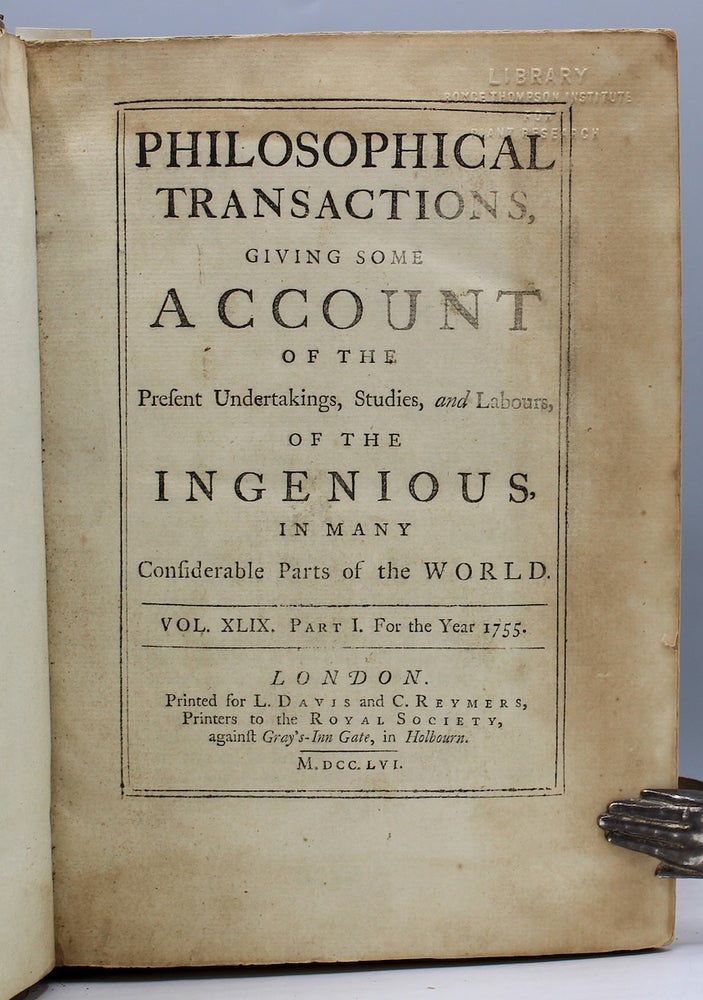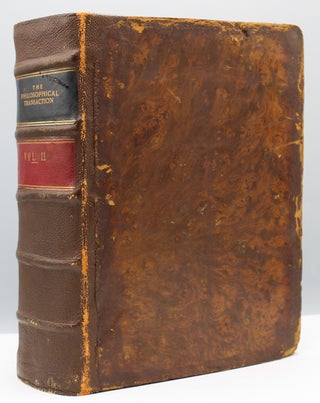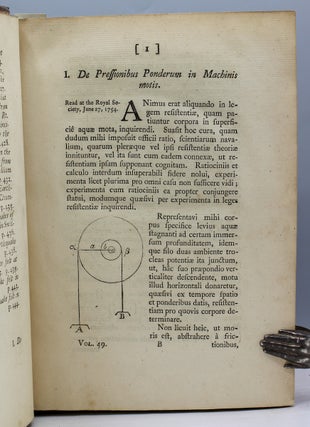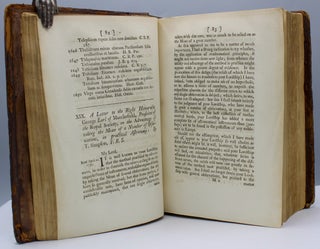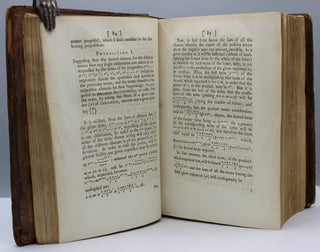“A Letter to the Right Honourable George, Earl of Macclesfield, President of the Royal Society, as to the Advantage of taking the Mean of a Number of Observations in Practical Astronomy.” In Philosophical Transactions, Volume 49, pp. 82-93, 1755.
No offprints are known to exist. The original volume, in contemporary full calf, firmly rebacked, with black and red leather labels. Item #8028
The practice of taking the average of a number of observations is rooted in antiquities. However, a mathematical proof that the average is nearer to the truth than any single observation is here presented for the first time. Simpson was the first to characterize the errors in observations as independent events, taking positive and negative values with equal probabilities, and the first to provide a mathematical expression for the probability that the error in the mean result will lie between assigned limits (Todhunter, p. 309). This paper, which was criticized by Reverend Thomas Bayes, and accordingly revised and reprinted in Simpson’s Miscellaneous Tracts (1757), is considered a milestone in statistical inference; a forerunner of Legendre-Gauss’s Least Squares, and “the earliest statistical advice from a mathematician to experimental science” (Stigler, p. 93). In modern terms, we can view this paper as the earliest formal treatment of any data-processing practice. Thomas Simpson (1710-1761) is best known for the “Simpson’s Rule” of computing the area under a curve using quadratic approximation.
Todhunter, History of Probability, p. 211, 309. Keynes, A Treatise on Probability, p. 210, 455. Stigler, History of Statistics, pp. 88-98.
Price: $2,000.00



